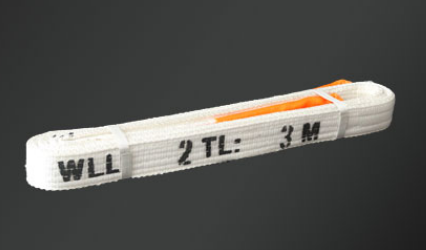When choosing lifting belts, we usually choose based on some technical parameters, such as load-bearing capacity, length, width, material, etc. Today, we will introduce in detail the main technical parameters of lifting belts.

1. Production materials: The manufacturing materials of lifting belts include polypropylene fiber, imported DuPont silk, polyester (polyester), nylon, Dinima, etc. The application advantages and occasions of different materials of lifting belts are different.
2. Carrying capacity: The carrying capacity of a lifting belt depends on factors such as its type, specifications, and material strength. Usually labeled in tons or kilograms. The carrying capacity of the lifting belt should comply with relevant standards and regulations.
3. Size: The length and width of the lifting belt vary depending on the usage needs and application scenarios. Common lengths include 1 meter, 2 meters, 3 meters, etc., while common widths include 25 millimeters, 50 millimeters, 75 millimeters, etc. The lifting strap can also be customized according to needs.
4. Hierarchy: Lifting straps are typically composed of multiple layers of fiber fabric to provide additional strength and durability. The number and type of hierarchical structures can vary according to the requirements and standards of lifting belts.
5. Safety factor: The safety factor of a lifting belt refers to the ratio between its rated carrying capacity and the actual load used. The selection of safety factors should comply with relevant standards and regulations to ensure the safety of lifting operations.
The above are the main technical parameters of the lifting belt. When choosing, you can first understand and then choose the appropriate model of lifting belt.